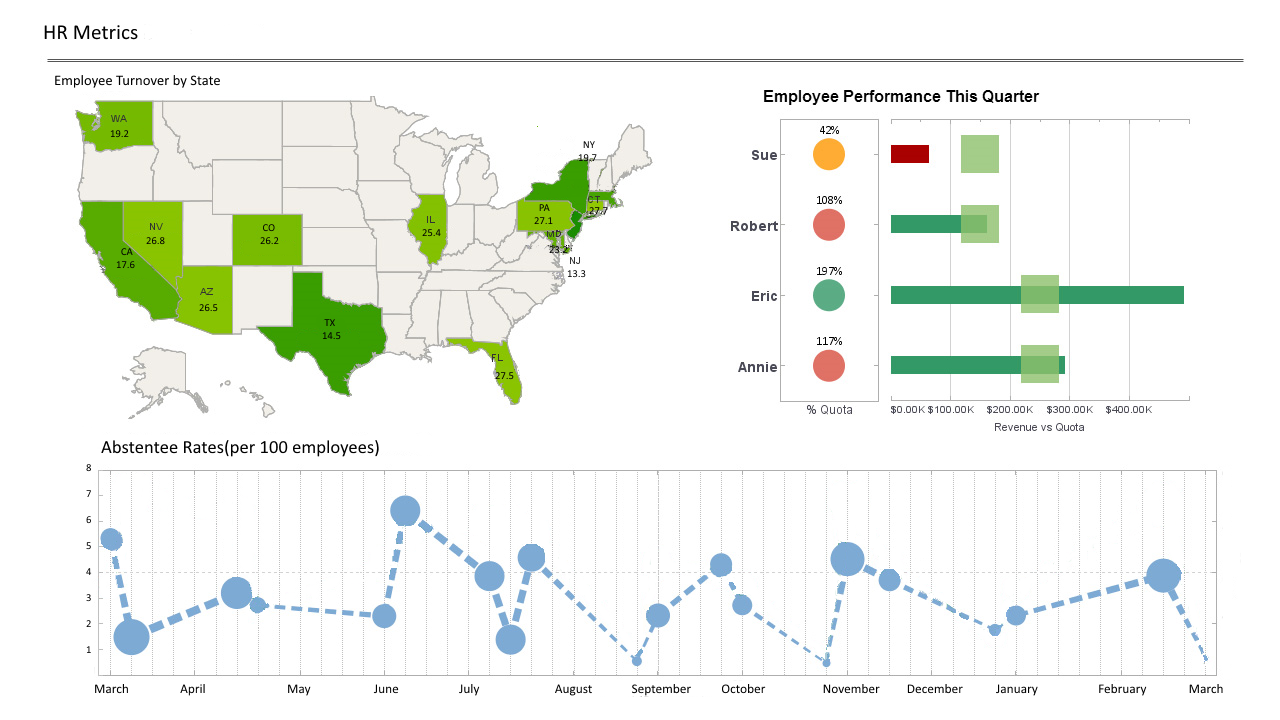Information Technology and Spreadmarts
This is a continuation of the transcript of a Webinar hosted by InetSoft. The speaker is Mark Flaherty, CMO at InetSoft, and he discusses the topic “Analysis and Exploration: Matching Tools and Needs”.
Mark Flaherty: So they have got to go back and get some more data, which case kicks off this circular process once again. And they may go through this cycle two or three or four times or more until they get it just right. And once they do, then they present the data via Excel or PowerPoint to executives.
And if this resonates well, then they will do the thing that really gets them in trouble with the IT department and ultimately the CEO, which is they will distribute the data via email or thumb drives or whatever so others can consume it.
Of course those of you who are in IT or in the BI department understand that this creates information chaos. We call them spreadmarts or spreadsheets on steroids or renegade data marts, where each spreadsheet has its own view of the world, its own definitions of key entities like customers and sales and profits depending on who pulls the data, which is pulled at different times.
So nothing ever maps up for executives. Managers can spend most of the meeting arguing about whose numbers are correct, instead of making critical decisions.
Understanding Spreadmarts
So spreadmarts cause lots of problems, multiple versions of the truth. They waste a lot of time and money of the analysts, well waste a lot of time of the analyst who spent up to two or three days a week just creating these spreadmarts on a regular basis. Spreadmarts are originally created for one-time analyses. It's a one-time analysis that’s turned into a regularly produced report, which has to be manually created each time. So that ends up wasting a lot of money in the form of wasted time of this analyst.
As we know these spreadsheets or spreadmarts contain a lot of inaccurate data. A lot of the data is entered by hand. Some of the formulas are misapplied. The SQL may not be entirely accurate, especially if data sources change. And therefore running our financial numbers on the spreadmarts, it's going to undermine compliance which then risks getting our executives thrown into jail.
A lot of people, sometimes they get the benefit of the spreadmarts since they do answer present business questions. They are in many ways an instantiation of a legitimate business requirement. You can short circuit your requirements gathering process by looking to see what spreadmarts exist out there and what needs they are serving and to what degree. And really a spreadmart, as I said earlier, is only a problem when they are published.
So when we talk about managing them, we need to apply a couple of different methods. One is governance. How do we govern what these business analysts produce? We don’t want to inhibit them from doing the analysis and the exploration, but we do want to manage what they publish.
How a Yacht Refitting Company Used StyleBI to Get Away From Spreadmarts
Yacht refitting companies manage complex projects involving engineering, design, compliance, and logistics. In many cases, these businesses historically relied on “spreadmarts”—disconnected spreadsheets maintained by different departments—to track budgets, schedules, parts inventory, and client updates. While spreadsheets provided flexibility, they created major challenges with version control, data accuracy, and cross-department collaboration. Teams spent more time reconciling conflicting reports than making decisions. One yacht refitting company overcame these problems by adopting StyleBI to centralize and standardize its reporting and analytics across the organization.
By implementing StyleBI, the company connected its diverse data sources—including project management tools, procurement systems, and time-tracking applications—into a unified business intelligence environment. Instead of each department maintaining its own spreadsheet, StyleBI provided live dashboards pulling directly from authoritative systems of record. Project managers could see real-time status updates on parts availability and labor hours, while finance could monitor budget adherence and profit margins without waiting for manual data consolidation. The single source of truth eliminated the confusion and delays caused by spreadmarts, improving trust in the data and ensuring decisions were based on accurate and consistent information.
The shift to StyleBI also allowed the yacht refitting company to be more proactive. Automated alerts notified managers of cost overruns or schedule delays before they became major issues, and self-service dashboards gave stakeholders the ability to drill into details without relying on emailed spreadsheets or static reports. This not only saved time but also fostered better collaboration across engineering, procurement, and client relations teams. By moving away from spreadmarts and embracing StyleBI’s centralized, real-time analytics, the company improved project outcomes, strengthened customer satisfaction, and gained the agility needed to compete in a highly specialized and competitive industry.


